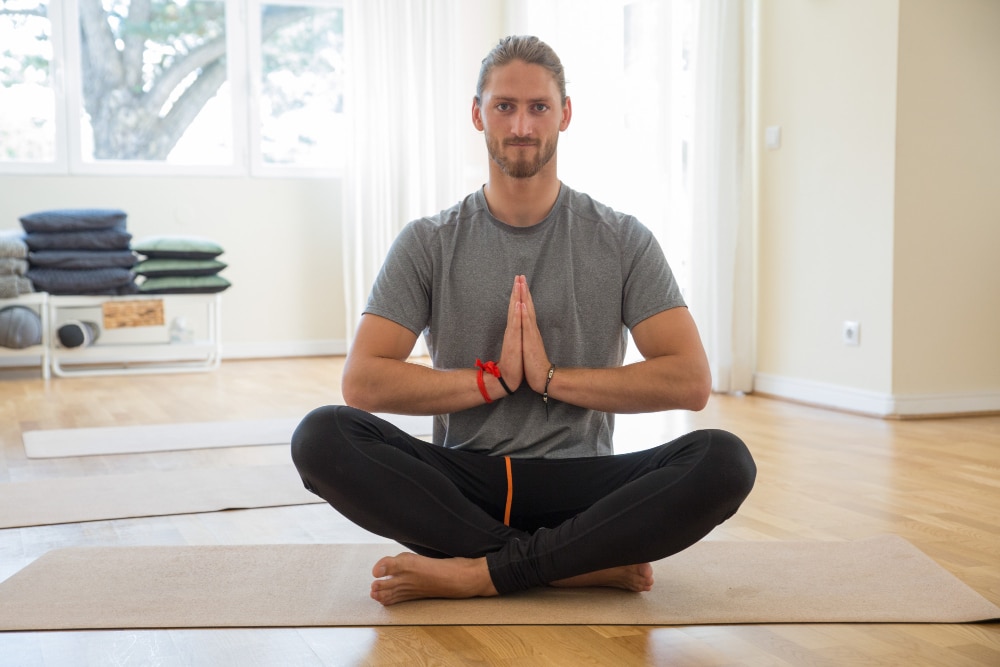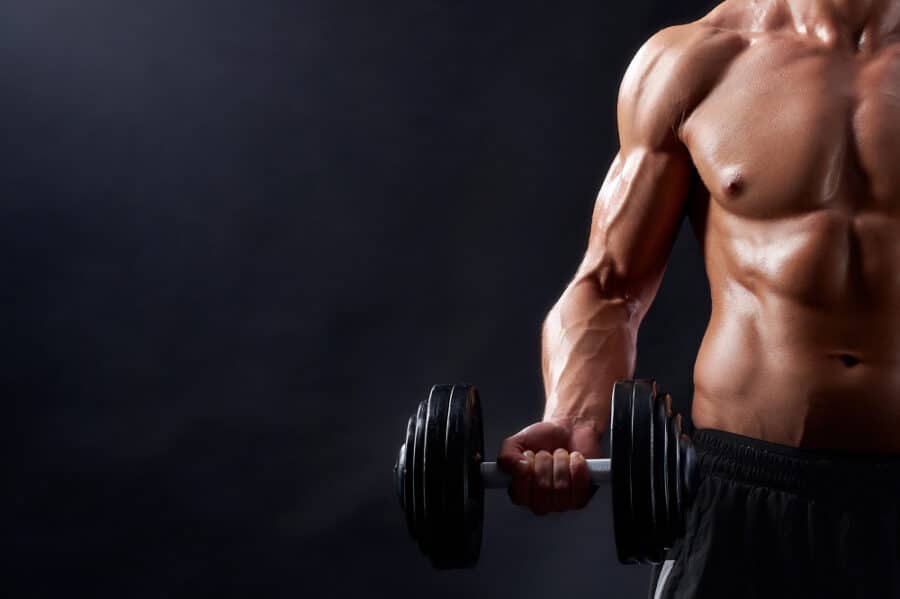Before I became a dad, the hardest decisions about my workout routine had to do with the types of exercise, I did that day and whether I was overtraining. Nowadays, my biggest question is can I even find enough time to have a workout routine?

Fitness Tips For Dads
Fatherhood shifts priorities so that one of the most important parts of staying healthy becomes one of the last things we have time to do. Fortunately, the myths about needing to sit on that Peloton for hours or bro out in the gym 5 days a week are just that, myths.
By combining a holistic fitness routine (using three specific types of exercise weekly) and efficiency (doing it in as little time as necessary) you can go beyond eliminating the dad bod and become healthier, fitter, and a great role model.
Why dads need to be fit
Regular exercise is arguably the best thing you can do for your physical and mental health. Working out improves cardiovascular health, bone density, flexibility, strength, and sleep quality.
It also helps to curb those blood markers that are likely rising at this stage of your life (blood sugar, cholesterol, inflammation) and the onset of the conditions that accompany them (diabetes, heart disease, cancer).
But the benefits of exercise go well beyond the physical. Staying fit lowers rates of anxiety and depression and improves mood and self-esteem.
Regular exercise has even been shown to improve your resilience, or your ability to cope with stress and adversity, which is particularly important for dads who are juggling multiple responsibilities and experiencing high levels of stress.
As a bonus, regular exercise gives you more energy with a side of improved cognition and creativity.
As dads, we have a unique opportunity to model healthy habits for our children. According to a recent study published in the Journal of Family Health, staying physically fit as a dad can have a positive impact on family health.
The study surveyed over 500 fathers and found that 87% of dads who reported being physically active also reported that their children participated in regular physical activity, compared to only 62% of dads who reported being inactive.
Additionally, 75% of active dads reported that their spouses or partners also engaged in regular physical activity, compared to only 45% of inactive dads.
Staying fit is an investment that stretches beyond your own health.

Efficient & Holistic Fitness
Getting into a habit of regular exercise as a dad requires pulling on two of your most valuable resources: time and energy. While consistency is an important component of a workout routine, dedicating enough hours to make that routine a part-time job is not.
The goal of staying fit is to maximize your body’s ability within the constraints as a dad, husband, employee, and every other title you juggle. To do that, you need to focus on challenging the three main energy systems of the body:
- Phosphagen System: 10 seconds or less of effort (sprinting, jumping, weight lifting)
- Glycolytic System: 10 seconds to 2 minutes (HIIT, boxing, rowing)
- Oxidative System (a.k.a. the aerobic system): more than 2 minutes (work with a certified running coach, cycling, hiking)
When it comes to elite sports, athletes are specialized so that only one of these systems is prioritized. For example, a powerlifter focuses on the phosphagen system, a 400-meter sprinter on the glycolytic, and a cyclist on the oxidative system.
When it comes to overall fitness, however, improving each of these systems is critical. This well-rounded approach improves health, strength, endurance, and aesthetics without a weak link in the chain.
For the sake of this article, I’m going to assume you have three hours to dedicate to exercise spread throughout the week (or 30 minutes a day for 6 days a week). Three hours of exercise is a lot for any dad but this ensures you’re hitting adequate amounts of each of the three systems.
Finding the time deserves a separate article but some ways to make it happen include microworkouts (have that kettlebell near your desk), batching workouts (HIIT first, cardio after), and including your kids in the workout.
The time will vary from dad to dad and week to week and that’s okay. Scale up on the weeks you have more time and scale back on those where you have less.

Your Fitness Routine
To get the highest demand of your body through each of the three energy systems, it’s best to evenly divide your workouts into one hour of cardio, one hour of HIIT, and one hour of strength training.
Cardio
Break the hour up into two 30-minute bouts. For each half hour, pick an activity (hiking, biking, walking, running, or rucking with your child on your back) and maintain a heart rate that stays in Zone 2, a heart rate zone that is moderate intensity that has been shown to improve aerobic fitness.
To calculate this, use the MAF (Maximum Aerobic Function) equation of 180 minus your age (e.g. 180 minus 30 years old = 150 heart rate). The goal is to stay within 5-10 beats of this number without surpassing it for the full 30-minute period. If you don’t have a heart rate monitor then use the talk test.
Start your exercise and maintain a pace where you can carry on a conversation comfortably without feeling out of breath. If you are able to talk in full sentences without gasping for breath, then you are likely in Zone 2.

HIIT (High-Intensity Interval Training).
Break the hour up into two 30-minute bouts or three 20-minute bouts. HIIT involves short bursts of high-intensity exercise (usually 20-60 seconds) alternated with periods of lower-intensity recovery or rest.
The key to HIIT is to push yourself to your maximum effort during the high-intensity intervals, which should be challenging enough to get your heart rate up and cause you to break a sweat.
The rest periods allow your body to recover before starting the next high-intensity interval. There are a million ways to skin a cat with this one.
Download an app or search some YouTube videos based on any equipment you might have (kettlebells, jump rope, pull up bar, etc) although no equipment is necessary. Then, hit the start button and get ready to sweat.
Lifting
Break the hour up into two 30-minute bouts or three 20-minute bouts. Resistance training, weight lifting, or simply “lifting” involves using weights, bands, or cables to move through ranges of motion.
The minimum effective dose for lifting is two bouts of 20 minutes a week using a full-body workout (as opposed to a split-body workout).
After a proper warm-up, choose one exercise for each of the 3 general muscle groups: push, pull, and legs (see below). Complete 2 sets of 6 reps of each of these exercises with a 1-minute rest between sets.
To determine the most effective weight, use 70-85% of your one rep maximum, or the most amount you can lift if you were to only do 1 repetition. Rest at least one day between workouts.
- Push exercise examples: chest press, overhead press, incline chest press.
- Pull exercise examples: pullup, bent over row, high pull.
- Leg exercise examples: deadlift, squat, lunge.

Conclusion
Staying fit will never be easy, especially as a dad. Fortunately, hours in the gym running or lifting aren’t necessary. To become fit, spend equal parts of your available exercise time on cardio, HIIT, and lifting.
Doing this ensures that you’re reducing your risk of chronic diseases, improving your energy, getting stronger, and ensuring that your kids carry over these healthy habits.
Brian Comly
Brian Comly, M.S., OTR/L is the founder of MindBodyDad. He’s a husband, father, and occupational therapist (OT). He launched MindBodyDad.com as a way to provide practical ways to live better through a combination of his experiences and science.
Sign up for his newsletter for weekly insights (and a great monthly roundup).

